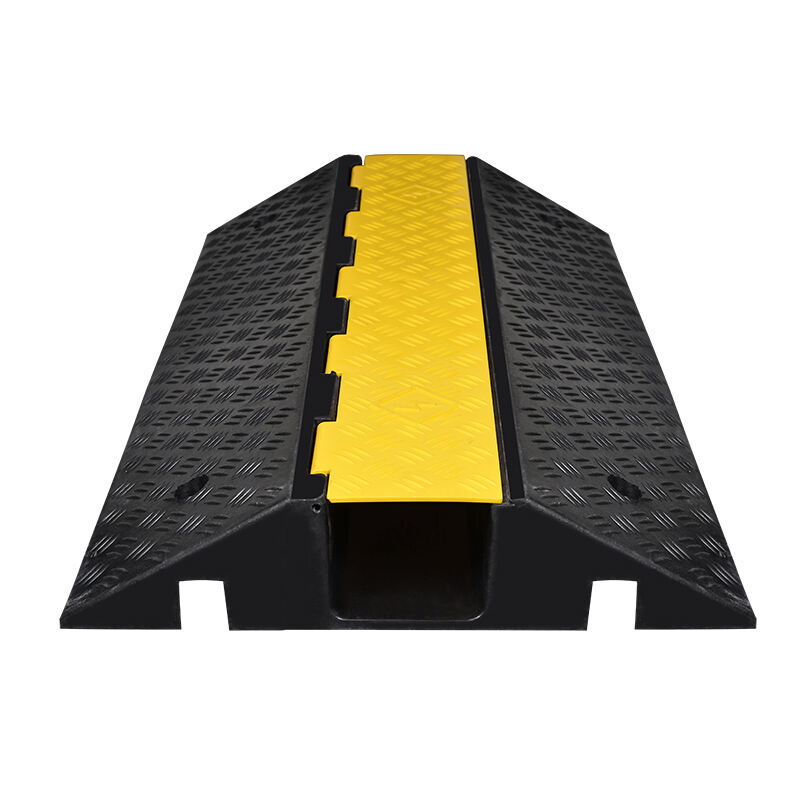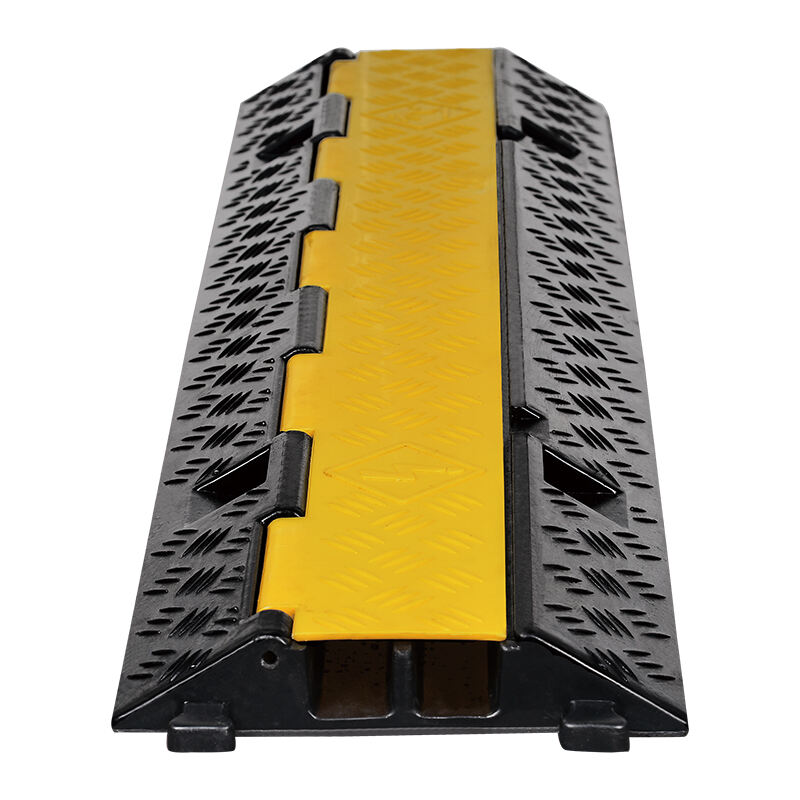Transforming Urban Traffic Management Through Advanced Safety Solutions
The landscape of roadway safety has undergone remarkable transformation in recent years, particularly in high-traffic zones where the need for innovative solutions has become increasingly critical. As urban populations continue to grow and traffic density reaches unprecedented levels, roadway safety innovations are reshaping how we protect both motorists and pedestrians in these challenging environments. From intelligent infrastructure to AI-powered monitoring systems, these advancements are setting new standards for traffic management and accident prevention.
Modern cities face mounting pressure to adapt their traffic systems to accommodate growing vehicle volumes while ensuring optimal safety standards. This evolution has sparked a wave of groundbreaking roadway safety innovations that combine traditional engineering principles with cutting-edge technology. The result is a more responsive, intelligent, and protective traffic environment that's changing how we think about urban mobility.
Smart Infrastructure Technologies Revolutionizing Road Safety
Intelligent Traffic Signal Systems
Advanced traffic signal control systems represent one of the most significant roadway safety innovations of our time. These systems utilize real-time data and adaptive algorithms to optimize traffic flow and reduce congestion in high-traffic zones. By analyzing traffic patterns and adjusting signal timing accordingly, these smart systems can reduce intersection waiting times by up to 40% while significantly decreasing the risk of accidents.
Modern intelligent traffic signals can also communicate with emergency vehicles, automatically adjusting signal patterns to create clear paths during emergencies. This technology not only improves response times but also enhances safety for all road users during critical situations.
Connected Infrastructure Networks
The integration of IoT (Internet of Things) sensors throughout road networks has created an interconnected system that monitors traffic conditions in real-time. These sensors collect valuable data about vehicle speed, density, and movement patterns, enabling traffic management centers to identify potential hazards before they escalate into dangerous situations.
Connected infrastructure also enables vehicle-to-infrastructure (V2I) communication, allowing cars to receive direct updates about road conditions, accidents, and other potential hazards. This seamless flow of information helps drivers make better decisions and adapt their driving behavior to current conditions.
Advanced Vehicle Detection and Warning Systems
AI-Powered Surveillance Solutions
Artificial intelligence has revolutionized traffic monitoring through sophisticated camera systems that can detect and analyze potential safety risks in real-time. These systems use machine learning algorithms to identify dangerous driving behaviors, predict potential accidents, and alert authorities to developing situations before they become critical.
The implementation of AI-powered surveillance has shown remarkable results in high-traffic zones, with some cities reporting up to a 30% reduction in serious accidents following deployment. These systems can also adapt to changing conditions and learn from historical data to improve their predictive capabilities over time.
Dynamic Warning Systems
Modern roadway safety innovations include advanced warning systems that provide drivers with immediate feedback about dangerous conditions or behaviors. Variable message signs, speed feedback displays, and other dynamic warning systems help maintain safe traffic flow by keeping drivers informed and alert.
These systems are particularly effective in high-traffic zones where conditions can change rapidly. By providing real-time updates about congestion, weather conditions, or accidents ahead, they enable drivers to adjust their behavior proactively rather than reactively.

Enhanced Pedestrian Protection Measures
Smart Crosswalk Technology
Innovative crosswalk systems now incorporate motion sensors, LED lighting, and automated warning systems to enhance pedestrian safety in busy urban areas. These smart crosswalks can detect approaching pedestrians and provide enhanced visibility through illuminated road markers and warning signals to approaching vehicles.
Some systems even integrate with traffic signals to extend crossing times for elderly or disabled pedestrians, ensuring everyone can cross safely regardless of their mobility level. These adaptable systems represent a significant advancement in protecting vulnerable road users in high-traffic areas.
Automated Pedestrian Detection
Advanced detection systems use thermal imaging and radar technology to identify pedestrians approaching crossings or entering roadways in low-visibility conditions. These systems can automatically trigger warning signals or adjust traffic patterns to prevent potential conflicts between vehicles and pedestrians.
The implementation of these automated detection systems has shown promising results, with some locations reporting up to a 50% reduction in pedestrian-related incidents during nighttime hours or adverse weather conditions.
Sustainable Safety Solutions
Energy-Efficient Lighting Systems
Modern roadway lighting solutions combine energy efficiency with enhanced safety features. LED lighting systems with adaptive controls can adjust brightness based on traffic conditions and time of day, ensuring optimal visibility while minimizing energy consumption.
These systems often integrate with other safety features, such as automatically increasing illumination when pedestrians are detected or during adverse weather conditions. This smart approach to lighting represents a perfect balance between safety enhancement and environmental responsibility.
Eco-friendly Road Materials
Recent innovations in road surface materials have produced options that not only improve safety but also contribute to environmental sustainability. These materials include photoluminescent road markings that absorb sunlight during the day and glow at night, reducing the need for artificial lighting while maintaining visibility.
Additionally, new road surfaces with enhanced drainage capabilities help prevent water accumulation and reduce the risk of hydroplaning in wet conditions, making high-traffic zones safer during adverse weather.
Frequently Asked Questions
How do smart traffic signals improve safety in high-traffic zones?
Smart traffic signals use real-time data analysis and adaptive algorithms to optimize traffic flow, reduce congestion, and minimize the risk of accidents. They can adjust signal timing based on current traffic patterns and create priority routes for emergency vehicles, leading to improved safety outcomes and reduced response times during emergencies.
What role does AI play in modern roadway safety systems?
AI technologies enhance roadway safety through real-time monitoring, predictive analytics, and automated response systems. They can detect dangerous driving behaviors, predict potential accidents, and alert authorities to developing situations, while continuously learning and improving their effectiveness over time.
How effective are new pedestrian protection systems in reducing accidents?
Modern pedestrian protection systems, including smart crosswalks and automated detection technology, have demonstrated significant effectiveness in reducing accidents. Studies show reductions of up to 50% in pedestrian-related incidents, particularly during challenging conditions such as nighttime or adverse weather.
What are the latest developments in sustainable roadway safety solutions?
Recent sustainable safety innovations include adaptive LED lighting systems, photoluminescent road markings, and eco-friendly surface materials with enhanced safety properties. These solutions combine improved safety features with reduced environmental impact, representing the future of roadway safety design.

